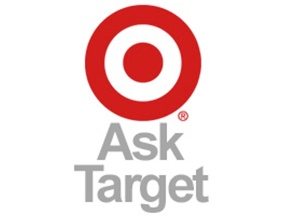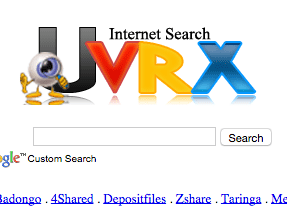“Reputation management” is an industry. It has been since the first negative review was posted online. Doing business on the Internet, after all, is based on brand awareness and engagement.
Negative reviews, disgruntled stakeholders, and trash talking can all do severe damage to a business.
In this article, I’ll focus on what a business can do to follow the online dialogue about its brand, and when and how to react to that dialogue. Reputation management should not be a reaction to negative dialogue about your organization. Rather, it should be a process in which you build positive engagement by staying plugged in to conversations about your brand.
Reputation management should not be a reaction to negative dialogue about your organization.
I’ll suggest, below, some tools for social listening and posting, as well as a process for making reputation management part of your daily operating procedures. Lastly, I’ll offer some rules of engagement as to how and when you should enter into dialogue with a disgruntled customer.
Start with the Tools
To monitor what is being said about you, your organization, and your stakeholders — employees, suppliers, key partners — establish a platform for social listening. There are many tools for this purpose. I use Google Alerts the most, simply because I am always plugged into Google from one device or another.
The list below contains tools that I have used or have explored first hand. These range from basic monitoring tools to platforms that let you react and post a public response to your social channels. I’ve added “Free” if the tool offers functionality that is always free — beyond just a free trial.
- Addict-o-matic (Free)
- Brand24
- BrandsEye
- Buffer (Free)
- Buzzsumo
- Google Alerts (Free)
- Hootsuite (Free)
- Meltwater (Free)
- Naymz (Free)
- NutshellMail (Free)
- Nuvi
- Oktopost
- Rankur (Free)
- Sendible
- SocialMention (Free)
- Spredfast
- Spriklr
- Sprout Social
- SumAll (Free)
- Topsy (Free)
- Trackur
- TrustPilot (Free)
- WhosTalkin (Free)
Create a Process for Monitoring and Responding
Who owns the dialog? This task usually falls to customer service personnel, but many organizations are relegating it to the social media staff. The owner of the dialogue has to be comfortable with technology across a variety of touch points.
Some organizations allow a wide range of employees to monitor and respond to social mentions, particularly if the organizations are trying to create a more personal experience. There are arguments for both types of ownership, but the only thing that really matters is that the person responding is trained, level-headed, technology-savvy, and is sensitive to customers’ needs.
What are you monitoring? You are listening for mentions about your brand, organization, and company. But this extends to your URL, your location, your managers, officers, and even employees. Imagine all of the possible customer touch points, and in all likelihood, someone will be socially engaging about that experience online.
Go a step further and look at misspellings of your company name or URL. If you have time, monitor your competitors as well — smaller organizations, with limited staff, should keep a tighter focus.
Decide on the channels and link them to your service. You have the basic channels — Facebook, Twitter, Instagram, Google +, Pinterest, and, perhaps, LinkedIn. However, for many of the monitoring platforms I have listed above, you can add more than these.
Consider including your industry-specific platforms where customers may be engaging your brand, such Wanelo and Polyvore for fashion, Houzz for the home furnishings, or Tumblr or StumbleUpon for micro-blogging content.
Remember your brand reputation can propagate across the web from almost any starting point. So the more proactive you are, the quicker you can guide the conversation.
… your brand reputation can propagate across the web from almost any starting point.
Develop a hierarchy of responses. I recently advised a large member-based organization. It was responding to social dialogue and criticism — compliments and complaints — with a single, canned response to contact the social manager via email.
The organization is correcting this by implementing a customer service platform that allows for collaborative customer-specific dialogue across the organization, and a single point-of-contact response to that customer. It’s a sophisticated system, good for a large company.
But all organizations, large and small, should implement a hierarchy of responses to deal with incoming dialogue in an organized and consistent manner. Part of your online reputation, after all, hinges on a uniform perception of your customer responsiveness. Using guidelines for appropriate responses, and how they will be escalated, will keep that uniformity intact.
There are platforms that integrate social media activity with customer issues originating from other channels, such as in-store, online, email, and phone. These platforms include Zendesk, LivePerson, Freshdesk, TeamSupport, and Desk (from Salesforce).
Some of these specialize in creating rich, user-generated self-help modules that work across platforms and devices, perfect for a complex customer ecosystem with multiple touch points.
Rules of Engagement
Once you have the people, process, and platform in place to monitor the dialogue, implement basic, company-wide guidelines to assure that the conversation doesn’t get too heated. Remember, no company ever won an argument with a customer.
- Think like the customer. What does the customer actually want out of this dialogue? It’s presumably a resolution to his problem for which he is holding your organization accountable.
- Remember the context. Emotional purchases can result in emotional responses. Similarly, crisis moments can result in near hysterical responses. A birthday cake disaster may not seem like a crisis to you, but it may be to your customer.
- Speed is critical. The longer you wait, the more time you give for that customer to build up steam. Defuse the situation as soon as possible and monitor your channels 24/7 if possible.
- Get to the heart of the dialogue. Sometimes the customer wants only a sympathetic ear. Sometimes she wants her problem solved yesterday. And sometimes she wants a discount. Listen carefully to determine what she really wants.
- Respond like it’s your grandmother. Restate the problem and explain how you are going to solve it, without inferring that the problem is not as serious as the customer thinks it is.
- Share the love. The biggest missed opportunity in reputation management is often the lack of follow-up when a problem has been successfully resolved. Repost the negative review if it has positive follow-up. Convert your complaining customer into a brand advocate by showing her voice is important.
- Just the facts, ma’am. Don’t let the dialogue get personal or engage in a he-said she-said type of response. The social listening and customer service platforms I’ve listed above will provide all the records you need for follow-up. Keep your policies simple and visible, train your staff, and don’t let the conversation get personal.
- What you say can and will be used against you. Unhappy customers can post and re-post if they feel they’ve been severely mistreated. They may copy and paste (a) dialogue you’ve had in the past, (b) inconsistent policies on your website, or (c) photos of the product or service in question. Keep the dialogue factual, polite, and professional.
- Remember, it’s an opportunity. Protecting your reputation is also about self improvement. Problems often occur because of shortfalls in an organization. View each customer dialogue as a learning opportunity, so the problem won’t happen again.




